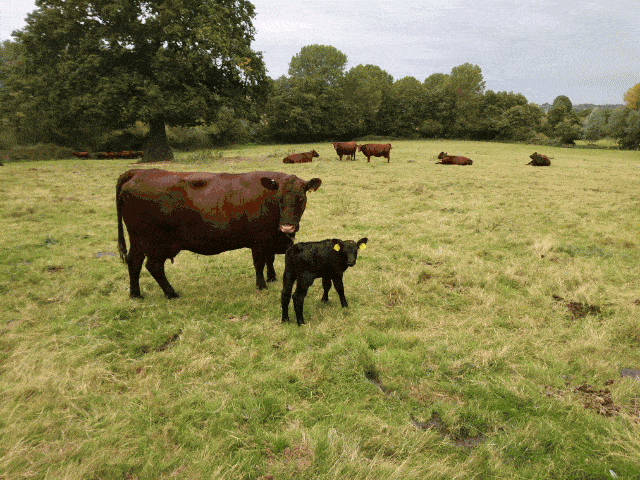Grass fed Beef
It’s official, cattle grazed on natural grassland produce tastier, healthier meat, with lower input costs and help maintain biodiversity. Findings from “Eating biodiversity: and investigation of the links between quality food production and biodiversity protection”, funded by the Economic and Social Research Council (ESRC), backs up what our senses have been telling us. The research concludes that pasture-based farming is good for the environment, the consumer and the producer.
Essex, Suffolk and Norfolk are blessed with river landscapes, heavily influenced by the estuarine nature of our coast which, along with our climate, provide farmers with an unparallel opportunity for low input, grass based rearing systems. Countryside management and livestock breeds have evolved to mutual benefit, although some modern farming systems let the opportunity pass by. There is no better example than assessing the merits of our native cattle breed, the Red Poll.
Developed by the Victorians as a dual purpose animal, the Red Poll fell out of favour in the 1970s with intensification of agriculture as continental breeds could outperform the traditional breed when being specifically reared for either beef or milk. However with input costs rising (manpower, oil based resources, service costs like vet bills, etc.) extensive rearing systems are attractive, particularly when cattle can be managed as an aside to other farming or diversification activities. The Red Poll cow is lighter, making them well suited to marginal pastureland and reducing ground poaching problems (Red Poll is a registered breed for Higher Level Stewardship). Their lighter frame dramatically reduces calving problems and their milk heritage means calf performance is high for low input. They are also extremely good natured animals making handling easy, even if they do not get a huge amount of direct human contact because they are ‘self-managing’.
As a breed noted for converting relatively marginal feed into quality beef their suitability increases. The biodiversity of plants and grasses in unimproved pastureland increases the nutritional value and provides a diet that is richer than improved grassland used by more intensive systems. In turn, a richer diet and slower maturation produces superior meat. Traditional cattle breeds have been selectively developed to thrive on such biodiverse pasture and taste panels have found beef is more tender and more intensely flavoursome than that reared in the intensive systems. This fact is complemented by chemical analysis of such beef which has showed that it is healthier with higher levels of vitamin E, more healthy fatty acids including the long chain omega 3 (thought to play a vital role in brain development and in preventing heart disease), and more conjugated linoleic acid which protects against cancer. It is also worth noting that a greater the amount of grain in a diet (typically the mainstay of an intensive beef system) the greater the omega 6 levels and the less omega 3, making the fatty acid balance less healthy.
As a breed noted for converting relatively marginal feed into quality beef their suitability increases. The biodiversity of plants and grasses in unimproved pastureland increases the nutritional value and provides a diet that is richer than improved grassland used by more intensive systems. In turn, a richer diet and slower maturation produces superior meat. Traditional cattle breeds have been selectively developed to thrive on such biodiverse pasture and taste panels have found beef is more tender and more intensely flavoursome than that reared in the intensive systems. This fact is complemented by chemical analysis of such beef which has showed that it is healthier with higher levels of vitamin E, more healthy fatty acids including the long chain omega 3 (thought to play a vital role in brain development and in preventing heart disease), and more conjugated linoleic acid which protects against cancer. It is also worth noting that a greater the amount of grain in a diet (typically the mainstay of an intensive beef system) the greater the omega 6 levels and the less omega 3, making the fatty acid balance less healthy.
Whilst an extensive system is a slower yielding process, with fattening taking 18 to 24 months compared to 10 to 14 months for mainstream commercial (continental) breeds, the meat quality commands a premium. By example Craig Bullard, a butcher at the Suffolk Food Hall, is more interested in a slower reared animal as there is greater depth in flavour, and the conformation is fatter which is why “it cooks so well”, he’s often heard to say. “I generally look for O+4L’s or O+5L’s to get the right meat for my customers, which a very different conformation to a supermarket preferred grade as they’re smaller more delicate cuts and with more fat, particularly inter-muscular”.

